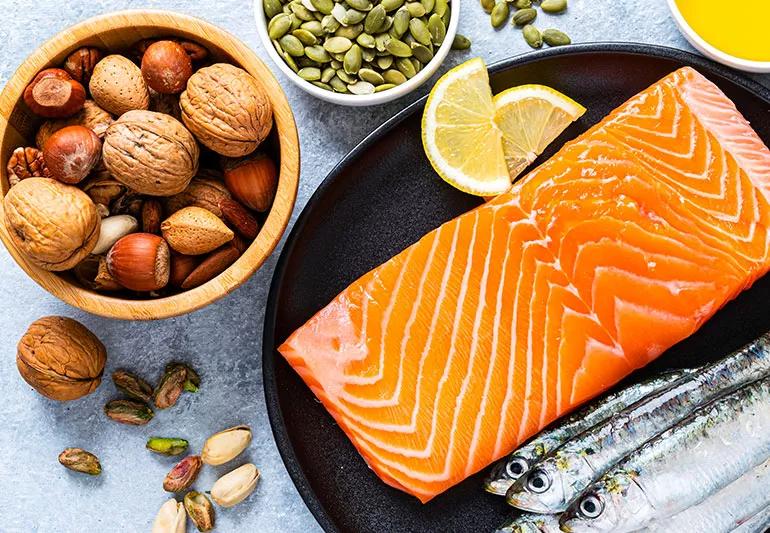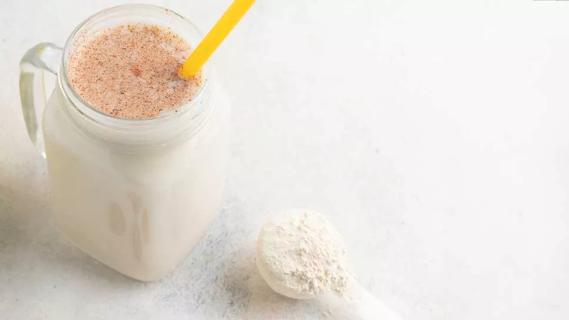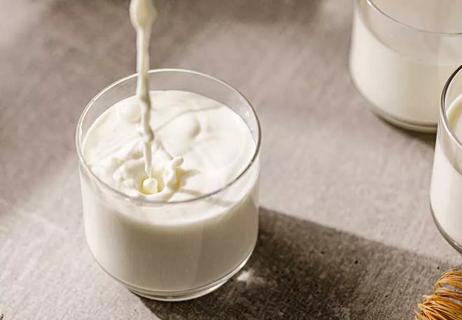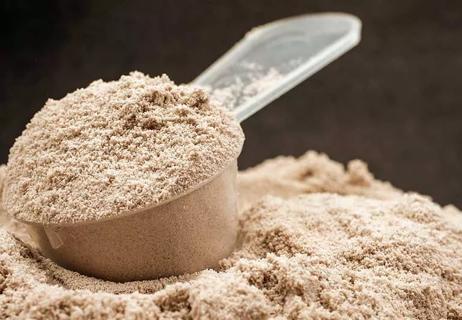Some options like chicken breast and beans are better for you than processed meats or dairy

We all need protein to stay healthy. And we typically think of getting protein from meat, with options like steaks, ground beef and turkey breast.
Advertisement
Cleveland Clinic is a non-profit academic medical center. Advertising on our site helps support our mission. We do not endorse non-Cleveland Clinic products or services. Policy
But what exactly is protein?
A molecule made up of hundreds of amino acids, protein helps our bodies work properly. Protein is the worker bee of our cells — helping the tissues and organs in our body form and function.
In fact, a diet high in protein may help:
But if you’re looking to maintain your muscle mass or focus more on a healthy way of eating, you want to be careful about which sources of protein you choose, as they aren’t all created equal.
So, what’s the best sources of protein?
Registered dietitian Julia Zumpano, RD, LD, talks about common sources of protein that are good for you and some that may do more harm than good.
When considering what kind of protein to have with each meal, are there options that are better than others? Yep. Zumpano shares the choices she makes when looking to include healthy proteins.
You may have a package of chicken breast hanging out in your freezer for those last-minute meals during a busy week.
And that’s for good reason. Chicken is a very versatile source of lean protein whether you’re baking chicken breast for dinner or using shredded chicken in tacos. The options are endless. A 3-ounce breast typically has about 27 grams of protein.
Advertisement
“Chicken is one of the most popular sources of protein. It has a favorable taste and great nutritional profile,” notes Zumpano. “Chicken provides protein, niacin, selenium, phosphorus and vitamins B6 and B12.”
A pro tip? Be sure to avoid the skin and visible fat as that provides extra calories in the form of saturated fat, which can lead to elevated cholesterol values.
Eggs are a complete protein. What does that mean? A food is considered a “complete protein” when it has the amino acids — all nine of them — that our body doesn’t make on its own. You can get about 6 to 8 grams of protein per egg.
Eggs are also low-carb, low-calorie and contain B vitamins, vitamin D, choline and omega-3 fatty acids. So, they’re worth a second look if you’ve stayed away from them due to cholesterol concerns.
“For years, foods naturally high in cholesterol, such as eggs, were thought to increase blood cholesterol values,” says Zumpano. “Research has proven that this is not the case. Instead it’s the amount of unhealthy fats such as saturated fat and trans fat that can elevate your cholesterol.”
Eggs are low in saturated fat and can play a role in a heart healthy diet.
“In general, an egg or two a day is advised, although if you do have high levels of blood cholesterol that are not well controlled you may benefit from limiting eggs to about 4 per week,” she adds.
Keep in mind that all the cholesterol is found in the yolk, which contains very little protein. You can consume as many egg whites as you desire, which will also maximize your protein intake.
Salmon has long been considered a great source of protein. A 3-ounce of the fish contains nearly 17 grams of protein.
And it comes with other good-for-you-benefits. Salmon is a good source of omega-3 fatty acids, which are unsaturated fatty acids your body produces little of (if at all) but is vital for heart, brain and eye health.
“Salmon is the best source of protein you can choose. It’s a rich source of inflammation-fighting omega 3 fatty acid that if eaten on a regular basis can improve cholesterol and blood pressure,” explains Zumpano.
Peanuts and peanut butter may be your go-to nut options. Fun fact: They contain the most protein than any other nut out there, with about 9.5 grams of protein per 1/4-cup serving.
“Be sure to choose a natural peanut butter, as most traditional brands add unhealthy oils and sugar. Check the ingredient list to be sure the only ingredient is peanuts, salt is optional,” advises Zumpano. “Also, avoid nuts that are coated in sugar or are roasted in unhealthy oils. Choose dry roasted nuts or nuts roasted in peanut oil.”
Advertisement
But don’t limit yourself to just peanuts. Instead, go nuts — think almonds, cashews, pistachios, walnuts — all of which contain a decent amount of protein. You can sprinkle nuts or seeds (like chia seeds, hemp seeds and flaxseeds) in your yogurt, eat a handful as a snack or make your own custom trail mix.
“Nuts and seeds are so versatile — they can be used in so many ways,” says Zumpano. “Aside from protein, they’re packed with fiber, healthy fats, vitamins and minerals and are a great way for those following a plant-based diet to get protein.”
If you’re vegan or vegetarian, beans and legumes can help you maintain a healthy amount of protein. Options include garbanzo beans, lentils, kidney beans, split peas, navy beans, cannellini beans, mung beans, soybeans, pinto beans, lima beans, Great Northern beans, black-eyed peas and black beans.
There’s lots of ways you can utilize beans and legumes in your daily meal planning. You can make beans the base of a soup or work beans into a salad or side dish easily as well.
And another great reason to include beans and legumes in your meals? They’re also a great source of fiber, which helps keep you fuller longer.
“Beans are similar to meat in terms of nutrients — although they’re lower in fat and iron,” says Zumpano. “They pack a punch when it comes to nutrients providing B vitamins, fiber, folate, zinc, calcium, potassium and phosphorus.”
Advertisement
Yes, there are unhealthy proteins out there. Zumpano outlines protein sources that you may want to eat in moderation or avoid in favor of healthier options.
Hot dogs, bacon, sausage and other processed meats may be your guilty pleasure. But their price tag for your health is high.
“Hot dogs have very little nutrition for the amount of calories you’re consuming and contain only a small amount of poor-quality protein,” says Zumpano. “They’re loaded with preservatives and contain mechanically separated meat.”
Food for thought: Hot dogs and other processed meats like salami, pepperoni and sausage generally contain less protein than a piece of fresh lean meat or fish.
Their high saturated fat and sodium content raises cholesterol and blood pressure and encourages weight gain.
Most worrisome of all, processed meats are considered carcinogenic. Many contain nitrates or nitrites, which studies link to several cancers. Regularly eating processed meats is correlated with an increased risk of colorectal cancer.
Eating high amounts of fatty cuts of red meat — meaning beef, pork and lamb — can be hazardous for your health.
“Grain-fed red meat is my least favorite source of protein, due to its high saturated fat content and impact on the environment,” states Zumpano.
Advertisement
Research links diets high in red meat to a higher risk of heart attack and stroke. The World Health Organization (WHO) has also named red meats probable carcinogens because they’re associated with several cancers.
“If you must eat red meat, do so sparingly, and choose lean grass-fed meats,” suggests Zumpano. “They’re lower in fat and research shows they contain 50% more omega-3 fats than conventionally fed animals.”
Add protein powder to your smoothie every morning? Be sure to read the ingredients first.
“All protein powders are not created equal,” cautions Zumpano.
The protein base can be whey, casein, beef, collagen, hemp, pea, egg or rice.
“But some protein powders are also loaded with added sugar, artificial sweeteners and preservatives,” she continues. “And because they’re regulated as supplements and not food, protein powders may also contain fillers, binders, colors, flavoring and preservatives.”
Zumpano recommends choosing a high-quality product that’s in line with your eating principles. If you’re vegetarian, you’ll want plant-based protein. If you have a dairy intolerance or allergy, you’ll want to avoid whey.
As a general rule, she recommends looking for organic protein powders that have few ingredients, and no added sugars, artificial sweeteners, preservatives or fillers.
Are you a cheese lover? Relying chiefly on dairy for your protein has pitfalls. It may be wise to cut back if you want to avoid weight gain.
Most dairy products contain some animal protein: 7 grams in 1 ounce of cheddar cheese, 8 grams in 1 cup of milk, 9 to 17 grams in 8 ounces of yogurt.
But a single ounce of cheddar cheese also has 6 grams of saturated fat.
“It’s easy to overdo portions of this high-fat protein food,” says Zumpano. “The 2020-2025 Dietary Guidelines for Americans recommend the average diet include no more than 22 grams of saturated fat per day, and those fat grams add up.”
Excess weight increases your risk of diabetes, cancer, high blood pressure, heart disease and other health problems.
Choose Greek yogurt or cottage cheese for protein instead of cheese, as they contain more protein and less fat per serving.
A part-skim or naturally lighter cheese such as goat, feta, ricotta or part-skim mozzarella can have a place in a healthy diet when used in moderation — Zumpano suggests no more than 1 ounce per day.
Overall, we know that more protein doesn’t always provider greater benefit. Too much protein can cause issues with dehydration and can accelerate kidney disease. And more protein may not equal more muscle when you’re getting more than you need.
When building your meals, make sure you’re choosing healthy sources of protein, which will help you reach or maintain your wellness goals.
“Consider healthier options when trying to boost protein in your diet,” emphasizes Zumpano. “Focus on getting the right amount of protein from the most nutritious sources.”
Learn more about our editorial process.
Advertisement

This edible insect powder can be a good source of protein, fiber and other nutrients

Protect and build muscle while getting essential amino acids and calcium with this protein

Going overboard on protein can lead to weight gain and kidney damage, among other issues

It’s nutritious, offers fiber, antioxidants and protein, and is good for food sensitivities

Complete proteins contain all of your essential amino acids

An expert explains the type of pea proteins and the benefits

The short answer from a dietitian about mixing protein powder and coffee

This popular trend could be doing more harm than good

Type 2 diabetes isn’t inevitable with these dietary changes

Applying a hot or cold compress can help with pain